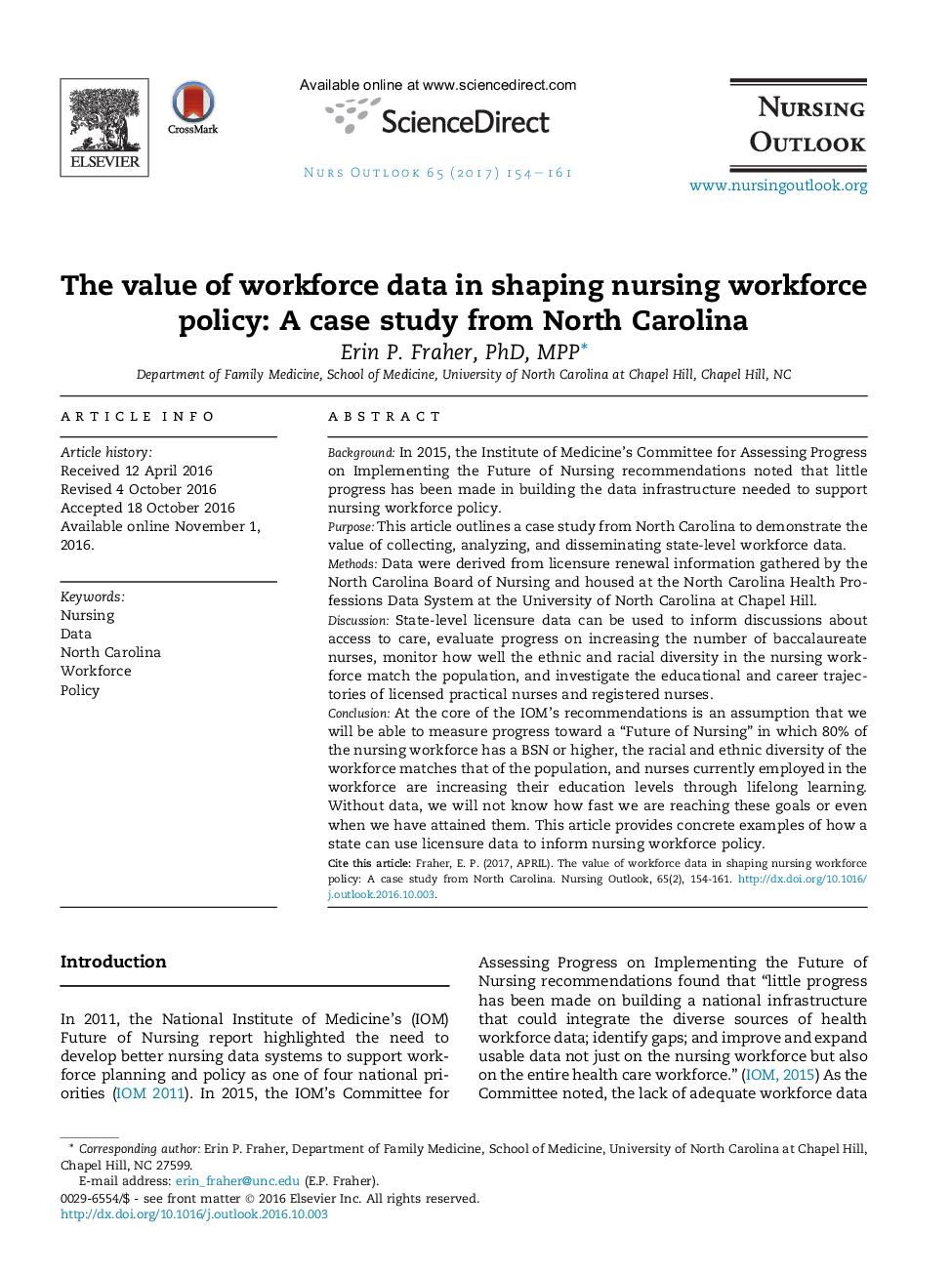| کد مقاله | کد نشریه | سال انتشار | مقاله انگلیسی | نسخه تمام متن |
|---|---|---|---|---|
| 5571133 | 1403789 | 2017 | 8 صفحه PDF | دانلود رایگان |

- Health workforce data gaps exist at the state and national level.
- This case study of North Carolina shows how nursing data have informed policy.
- Licensure data were used to evaluate progress on Institute of Medicine's recommendations.
BackgroundIn 2015, the Institute of Medicine's Committee for Assessing Progress on Implementing the Future of Nursing recommendations noted that little progress has been made in building the data infrastructure needed to support nursing workforce policy.PurposeThis article outlines a case study from North Carolina to demonstrate the value of collecting, analyzing, and disseminating state-level workforce data.MethodsData were derived from licensure renewal information gathered by the North Carolina Board of Nursing and housed at the North Carolina Health Professions Data System at the University of North Carolina at Chapel Hill.DiscussionState-level licensure data can be used to inform discussions about access to care, evaluate progress on increasing the number of baccalaureate nurses, monitor how well the ethnic and racial diversity in the nursing workforce match the population, and investigate the educational and career trajectories of licensed practical nurses and registered nurses.ConclusionAt the core of the IOM's recommendations is an assumption that we will be able to measure progress toward a “Future of Nursing” in which 80% of the nursing workforce has a BSN or higher, the racial and ethnic diversity of the workforce matches that of the population, and nurses currently employed in the workforce are increasing their education levels through lifelong learning. Without data, we will not know how fast we are reaching these goals or even when we have attained them. This article provides concrete examples of how a state can use licensure data to inform nursing workforce policy.
Journal: Nursing Outlook - Volume 65, Issue 2, MarchâApril 2017, Pages 154-161